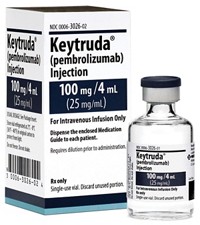Advertisement
Grab your lab coat. Let's get started
Welcome!
Welcome!
Create an account below to get 6 C&EN articles per month, receive newsletters and more - all free.
It seems this is your first time logging in online. Please enter the following information to continue.
As an ACS member you automatically get access to this site. All we need is few more details to create your reading experience.
Not you? Sign in with a different account.
Not you? Sign in with a different account.
ERROR 1
ERROR 1
ERROR 2
ERROR 2
ERROR 2
ERROR 2
ERROR 2
Password and Confirm password must match.
If you have an ACS member number, please enter it here so we can link this account to your membership. (optional)
ERROR 2
ACS values your privacy. By submitting your information, you are gaining access to C&EN and subscribing to our weekly newsletter. We use the information you provide to make your reading experience better, and we will never sell your data to third party members.
Environment
Heroes Of Chemistry
Teams of chemists honored for medical and green chemistry breakthroughs
by Linda R. Raber
October 16, 2006
| A version of this story appeared in
Volume 84, Issue 42
An antibiotic that fights resistant bacteria, chemotherapy for a rare cancer, methods to make fiberglass and refrigerants more environmentally friendly, a more productive and safer way to transport needed toxic gases, and a drug to fight serious fungal infections are the creations of the 2006 Heroes of Chemistry. The industrial scientists who made these advances possible were honored at the ACS national meeting in San Francisco on Sept. 10.
The scientists are members of multidisciplinary teams from six companies. Individuals were nominated by their companies, and the winners were chosen by an ACS panel. Heroes are industrial scientists whose work has led to the successful development and commercial sale of a technological product. Now in its 10th year, the Heroes of Chemistry program is ACS's premier program to honor industrial chemists and chemical engineers who create products that improve quality of life.
"Heroes save lives and change them for the better," said ACS President E. Ann Nalley at the awards ceremony. "This year's Heroes of Chemistry have improved our lives through their inventions. We at ACS celebrate them and the corporate management that supports innovations that bring the benefits of chemistry to us all, every day."
Following are descriptions of the companies' products and achievements and the names of the scientists who made them possible.

Wyeth researchers were honored for developing Tygacil (tigecycline), the first in a new class of antibiotics called glycylcyclines, tetracycline derivatives that overcome key mechanisms of bacterial resistance. Tygacil is a broad-spectrum antibiotic that is effective against penicillin-resistant Streptoccus pneumoniae, abdominal infections, and complicated skin infections. It also works well against bacteria that carry either of the two major types of tetracycline-resistance genes. Wyeth plans to file for approval to use Tygacil against other resistant pathogens as well as to treat patients who develop pneumonia in the hospital and elsewhere. Thus far, researchers believe that resistance to the new antibiotic is progressing slowly, if at all, and is unlikely to adversely affect its use in treating resistant pathogens in the future.
The individuals at Wyeth honored as Heroes of Chemistry are Evelyn Ellis-Grosse, former assistant vice president, cardiovascular/infectious disease; Evan Loh, vice president, multiple therapeutic areas, clinical research and development; Phaik Eng Sum, principal research scientist III; and Raymond Testa, retired senior director, infectious disease and natural products research.

Eli Lilly & Co., in collaboration with Princeton University, was recognized for developing Alimta (pemetrexed disodium), a chemotherapy drug for patients with malignant pleural mesothelioma (MPM), a rare lung cancer usually caused by long-term exposure to asbestos. Alimta is an antifolate that exerts its action by disrupting folate-dependent metabolic processes essential for cell replication. It is used in combination with cisplatin. In addition to treating MPM, Alimta has been approved as an effective second-line treatment for non-small-cell lung cancer, and research is under way to test the drug's effectiveness in fighting other tumors, such as small-cell lung cancer and head and neck cancers.
In early research, Alimta produced unexpectedly severe side effects in a few patients, and the development was almost halted. A team of researchers led by Lilly discovered that giving patients vitamin B-12 and folic acid significantly reduced the drug's side effects without negatively affecting its ability to kill cancer cells.
The team members honored for developing Alimta are Homer Pearce (retired), distinguished research fellow in cancer research at Lilly Research Laboratories; Chuan (Joe) Shih, distinguished research fellow at Eli Lilly; and Edward E. Taylor, professor emeritus of chemistry, Princeton University.

A Rohm and Haas team developed Aquaset acrylic thermosetting binders as green chemistry alternatives to standard binders, many of which release unwanted by-products including phenol, methanol, ammonia, and formaldehyde. Used to give shape and strength to nonwoven fibrous materials, thermosetting binders are a primary component of most fiberglass insulation. Unlike many other products on the market, the nonreactive, nonflammable, and recyclable Aquaset technology can be easily and safely transported, stored, applied, and cleaned up.
The close collaboration between Rohm and Haas and Johns Manville on the commercialization of Aquaset technology resulted in Johns Manville's decision to produce a full line of fiberglass insulation made without formaldehyde or formaldehyde-generating materials. It is the first company in the world to make this dramatic switch.
Rohm and Haas Aquaset team members honored in San Francisco are Guy Clamen, project scientist, Valbonne, France; Richard Dobrowolski, senior scientist; William Finch, distinguished scientist; Griffin Gappert, senior scientist; Hal Morris, global sales and technical service manager; Paul Nedwick, global research manager; Xun Tang, global research manager; and Barry Weinstein, research fellow.

DuPont scientists were recognized for development of hydrofluorocarbon (HFC) refrigerant blends for the air-conditioning and refrigerant industry that are better for the environment than chlorofluorcarbons (CFCs), which had been used in the past. CFCs have been implicated in the depletion of the ozone layer, and a substitute was sought by government and industry. Scientists could not find a single compound that would be a suitable replacement, but DuPont scientists found a number of products, including blends of HFCs, that provided an answer. Today, the blends have been widely adopted by the refrigerant industry around the world as CFCs are being phased out in an effort to protect the environment.
DuPont scientists honored in SanFrancisco are Donald B. Bivens, former process engineer and research scientist and now a consultant for the company; Mark B. Shiflett, research associate; and Akimichi (Michi) Yokozeki, process engineer and research scientist.

ATMI developed Safe Delivery Sources (SDS), products that enhance productivity, safe packaging, transport, and use of extremely toxic gases such as arsine, phosphine, and boron trifluoride, each of which is used extensively in the semiconductor industry for ion implantation. SDS is an alternative to high-pressure gas cylinders. SDS technology reduces vapor pressure, effectively converting the gas into a "no pressure" material. When it is required, the SDS-treated gas may be retrieved by using vacuum equipment.

ATMI scientists honored in San Francisco are Jose Arnó, director of materials and gas delivery; Donald Carruthers, senior research scientist; and Edward Sturm, senior research engineer, gas operations.
Merck scientists developed Cancidas (caspofungin acetate) to treat serious fungal infections. Cancidas is the first of a new class of antifungal agents to reach clinical practice. Unlike its predecessors, the drug specifically inhibits the synthesis of  -(1,3)-D-glucan, an integral component of the fungal cell wall. It was initially approved for the treatment of aspergillosis, an often fatal disease that occurs most often in the skin, ears, nasal sinuses, and lungs of people with suppressed immune systems. More recently, Cancidas has been used to treat esophageal and other invasive fungal infections and as empirical therapy for presumed fungal infections in patients who have a fever while their white blood cell count is low, a frequent complication of cancer chemotherapy.
-(1,3)-D-glucan, an integral component of the fungal cell wall. It was initially approved for the treatment of aspergillosis, an often fatal disease that occurs most often in the skin, ears, nasal sinuses, and lungs of people with suppressed immune systems. More recently, Cancidas has been used to treat esophageal and other invasive fungal infections and as empirical therapy for presumed fungal infections in patients who have a fever while their white blood cell count is low, a frequent complication of cancer chemotherapy.
Merck scientists honored in San Francisco are James Balkovec, senior scientific director, medicinal chemistry; David Hughes, executive director, process chemistry; and Robert Schwartz, senior investigator in charge of the Compound Management Group.







Join the conversation
Contact the reporter
Submit a Letter to the Editor for publication
Engage with us on Twitter